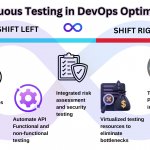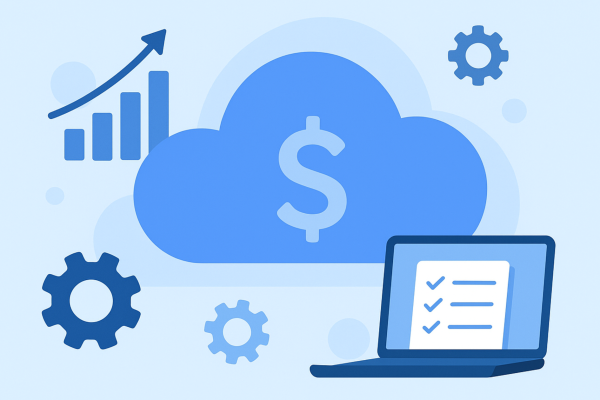Cloud Infrastructure Performance Optimization: Unlocking the Full Potential of Your Cloud Investments
Introduction
In today’s digital landscape, the efficiency and performance of your cloud infrastructure services play a pivotal role in ensuring smooth business operations and delivering superior customer experiences. Cloud infrastructure services provide businesses with scalable and flexible computing resources, but optimizing these services is crucial to maximize their potential and achieve cost-effectiveness. This blog will delve into various strategies and best practices for optimizing cloud infrastructure performance, covering aspects such as resource management, cost control, network optimization, and more. By implementing these strategies, businesses can enhance their cloud performance, reduce costs, and improve overall operational efficiency.
Understanding Cloud Infrastructure Performance
Before diving into optimization techniques, it’s essential to understand what constitutes cloud infrastructure performance. Cloud performance encompasses various metrics, including:
- Latency: The time it takes for data to travel from one point to another in the cloud.
- Throughput: The amount of data that can be processed over a given period.
- Availability: The uptime of cloud services, ensuring they are accessible when needed.
- Scalability: The ability of the cloud infrastructure to handle increased loads without compromising performance.
1. Right-Sizing Resources
Right-sizing entails aligning cloud resources precisely with the actual requirements of your applications. Over-provisioning leads to unnecessary costs, while under-provisioning can cause performance bottlenecks. Tools like AWS Trusted Advisor, Azure Advisor, and Google Cloud’s Recommender provide insights into resource utilization, helping you make informed decisions.
2. Leveraging Auto-Scaling
Auto-scaling adjusts the number of cloud resources based on the current demand. This ensures that you only pay for what you use while maintaining optimal performance. AWS Auto Scaling, Azure VM Scale Sets, and Google Cloud’s Autoscaler are popular tools that can automate this process.
3. Utilizing Load Balancers
Load balancers distribute incoming network traffic across multiple servers, preventing any single server from becoming a bottleneck. This enhances both performance and reliability. AWS Elastic Load Balancing, Azure Load Balancer, and Google Cloud Load Balancing are effective solutions for managing traffic distribution.
4. Implementing Caching
Caching frequently accessed data can significantly reduce latency and improve application performance. Services like AWS CloudFront, Azure CDN, and Google Cloud CDN provide content delivery networks that cache data closer to the end-users, speeding up data retrieval times.
5. Optimizing Storage Solutions
Choosing the right storage solution based on your needs is critical. For instance, using SSDs instead of HDDs can dramatically improve data access speeds. Additionally, employing storage tiering strategies, where frequently accessed data is stored on faster storage and less frequently accessed data on slower, more cost-effective storage, can optimize performance and costs.
6. Monitoring and Alerting
Continuous monitoring of cloud infrastructure is essential for identifying performance issues before they impact users. Tools like AWS CloudWatch, Azure Monitor, and Google Cloud Monitoring provide real-time insights into resource utilization, application performance, and potential issues, allowing for proactive management.
1. Right-Sizing Resources
Cost Optimization Techniques
While performance optimization is crucial, managing costs is equally important to ensure that cloud services remain affordable. Here are some cost optimization strategies:
1. Reserved Instances and Savings Plans
Cloud providers offer cost savings for long-term commitments. Reserved Instances (RIs) and Savings Plans allow you to commit to using a certain amount of resources for a reduced rate compared to on-demand pricing. AWS, Azure, and Google Cloud all offer these options, which can result in significant cost savings.
2. Spot Instances
Spot Instances allow you to take advantage of unused cloud capacity at a fraction of the cost of regular instances. While these instances can be interrupted, they are ideal for non-critical workloads and batch-processing tasks. AWS Spot Instances, Azure Spot VMs, and Google Preemptible VMs provide these cost-effective options.
3. Rightsizing and Deleting Unused Resources
Regularly review your cloud environment to identify and eliminate underutilized or idle resources. Unused storage volumes, orphaned snapshots, and idle instances can contribute to unnecessary costs. Implementing regular audits and using cloud provider tools to identify these resources can help in cost management.
4. Leveraging Free Tiers and Promotions
Most cloud providers offer free tiers and promotional credits that can help reduce costs, especially for startups and small businesses. Taking advantage of these offers can provide substantial savings in the initial stages of cloud adoption.
Enhancing Network Performance
Network performance is a critical aspect of overall cloud infrastructure performance. Optimizing network configurations can lead to faster data transfer rates and reduced latency.
1. Using Content Delivery Networks (CDNs)
CDNs cache content at multiple locations around the globe, reducing latency by serving data from the nearest server to the user. This is especially beneficial for websites and applications with a global user base. AWS CloudFront, Azure CDN, and Google Cloud CDN are effective solutions for deploying CDNs.
2. Implementing Network Segmentation
Segmenting your network can improve security and performance by isolating different types of traffic. Virtual Private Clouds (VPCs) and Virtual Networks (VNets) allow you to create isolated environments within the cloud, optimizing traffic flow and reducing latency.
3. Optimizing DNS Configurations
Domain Name System (DNS) configurations can impact how quickly users can access your services. Using services like Amazon Route 53, Azure DNS, and Google Cloud DNS, you can implement latency-based routing, geo-routing, and other optimization techniques to ensure faster domain name resolution.
Security Considerations in Performance Optimization
Optimizing cloud infrastructure performance should never compromise information security. Here are some best practices to ensure your optimizations do not expose vulnerabilities:
1. Secure Access Controls
Implement stringent access controls to limit who can access and modify your cloud resources. Use Identity and Access Management (IAM) tools to enforce the principle of least privilege, ensuring users have only the permissions necessary for their roles.
2. Regular Security Audits
Conduct regular security audits to identify and mitigate potential vulnerabilities in your cloud environment. Utilize tools like AWS Security Hub, Azure Security Center, and Google Cloud Security Command Center to continuously monitor and improve your security posture.
3. Data Encryption
Ensure that all data, both in transit and at rest, is encrypted. Use managed encryption services provided by cloud vendors to simplify the process and ensure compliance with industry standards.
4. Implementing Firewalls and Network Security Groups
Use firewalls and network security groups to control and monitor traffic to and from your cloud resources. These tools help protect your applications from unauthorized access and attacks.
Conclusion
Optimizing cloud infrastructure performance involves a comprehensive approach that balances resource management, cost control, network optimization, and robust security measures. By implementing strategies such as right-sizing, auto-scaling, load balancing, and caching, businesses can enhance their cloud performance, ensuring that applications run smoothly and efficiently. Additionally, cost optimization techniques, network performance enhancements, and database performance improvements contribute to a well-rounded optimization strategy.
It’s crucial to remember that while performance optimization is important, it should never come at the expense of information security. By adhering to security best practices and regularly reviewing your cloud infrastructure, you can achieve an optimized and secure cloud environment that supports your business goals.
Investing time and effort into cloud infrastructure performance optimization not only maximizes the return on your cloud investments but also ensures a seamless and secure user experience. With the right strategies in place, businesses can unlock the full potential of their cloud services, driving innovation and growth in an increasingly digital world.
Author







